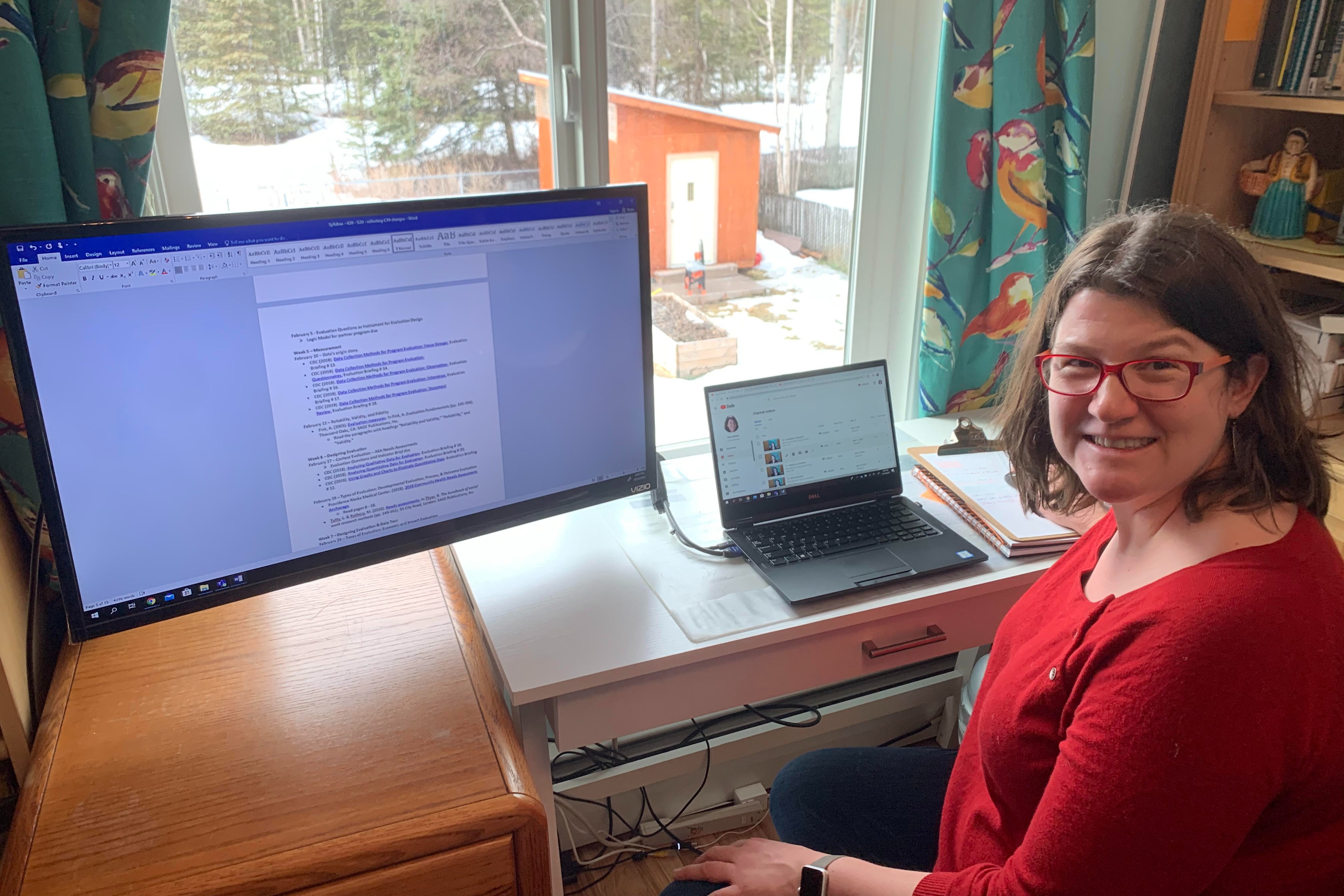Virtual spring: How UAA faculty went from the classroom to online
by Catalina Myers |

It’s been nearly five weeks since Simon Kattenhorn, professor and director of UAA’s Department of Geological Sciences, has stepped foot on campus. As state and local government took action to slow the spread of COVID-19, the statewide University of Alaska system announced an extended spring break for all three UA campuses and community campus locations — giving professors exactly one week to move their classes from in-person to online.
“There’s a reason we don’t commonly offer online degrees at the bachelor’s level in the geosciences because there’s so much hands-on learning that’s involved,” said Kattenhorn, who had to not only figure out how to move his two 75-minute lectures and one lab online — but also how to provide the same type of hands-on experience his students receive in his classes each week. “It’s a very specialized field that is not exactly conducive to online learning at the lower level — it’s been quite a challenge.”
In addition to leaving behind many of the specimens and specialized software programs normally at his disposal in the lab, as head of the department, Kattenhorn has also had to help his colleagues navigate moving their lecture and lab classes online as well.
“I’ve had a lot of conversations with our instructional faculty on how to do that in an effective way that doesn’t compromise student learning outcomes,” said Kattenhorn. “I’m not going to lie, it’s been challenging, but it’s been a good challenge in many ways — it makes us think about the future of higher education.”
Corrie Whitmore, assistant professor in the Department of Health Sciences and program coordinator for the Bachelor of Science, in the health sciences program, had been following the COVID-19 news before she and her family left for spring break vacation and told her students that she was relaxing her attendance and participation policy in anticipation of smaller class sizes due to the concern over the growing pandemic.
“When we arrived home, we knew we wouldn’t be returning to campus for two weeks,” said Whitmore, whose husband also works at UAA, in the UAA/APU Consortium Library. When she opened her email for the first time, she was met with the mandate to stay home and self-quarantine. “We chose to keep our kids out of daycare and did a pretty serious self-quarantine — which was up on March 28 — essentially the same day the “shelter in place” went into effect. So rather than us coming out of quarantine, it feels like everyone came in with us.”
Whitmore, like many instructors across campus, was facing the reality of having to teach while hunkering down with children, balancing work duties with a spouse and learning how to get groceries delivered to the door. She was grateful for the extra week to move all her courses online and for the fact that it was not her first time having to navigate that process.
Her introduction to program evaluation course centered around face-to-face class discussions and community-engaged learning, which Whitmore said was challenging to take online when she had focused the course so much around in-class interaction.
“I’ve chosen to go asynchronous — I am recording lectures and putting up assignments — and that’s to increase my students' flexibility and reduce technical issues,” she said. With the rapid change in course delivery, not all students were able to pivot as quickly to acquire the technology or resources to attend Zoom lectures or other types of video conferencing formats. “For my students, this just made sense to try and dial the stress down and let them manage their own time.”
Finding ways to connect with students and provide the same, personal experience while also a seamless, stress-free academic environment is a sentiment echoed across the university and not an easy feat.
“A large part of my job is helping people mature, not just delivering content on debate,” said Steve Johnson, associate professor in the Department of Communication and director of the Seawolf Debate Program. He’s said much of his virtual class and online practice time with the Seawolf Debate team is spent checking in and gauging his students' emotional state as they try to balance and navigate their new reality. “We become friends, mentors and role models, we offer guidance in thousands of ways every academic year. It’s as small as just knowing a student's name and making them feel welcome, or as significant as knowing a student is in crisis.”
The challenge now, Johnson said, is still being able to provide that support net virtually. Both Whitmore and Kattenhorn echo Johson’s sentiments and are concerned about the mental health of their students in being able to finish their semester in as stress-free a way as possible. In addition to attending to their students and coursework, Whitmore and Kattenhorn are re-assessing how they’ll continue to perform research, while Johnson had to quickly create materials and resources for the middle and high school programs throughout the Alaska community that Seawolf Debate is connected to.
“It’s definitely been a challenge,” Kattenhorn said. He noted he sits in front of his computer from his home office from about 8 a.m. to 5 p.m. each day but says at least he has a nice view of the mountains. “I can see the Hollywood Squares view of people staring back at me in Zoom and you can definitely feel like something is missing — I am starting to miss that interaction.”









